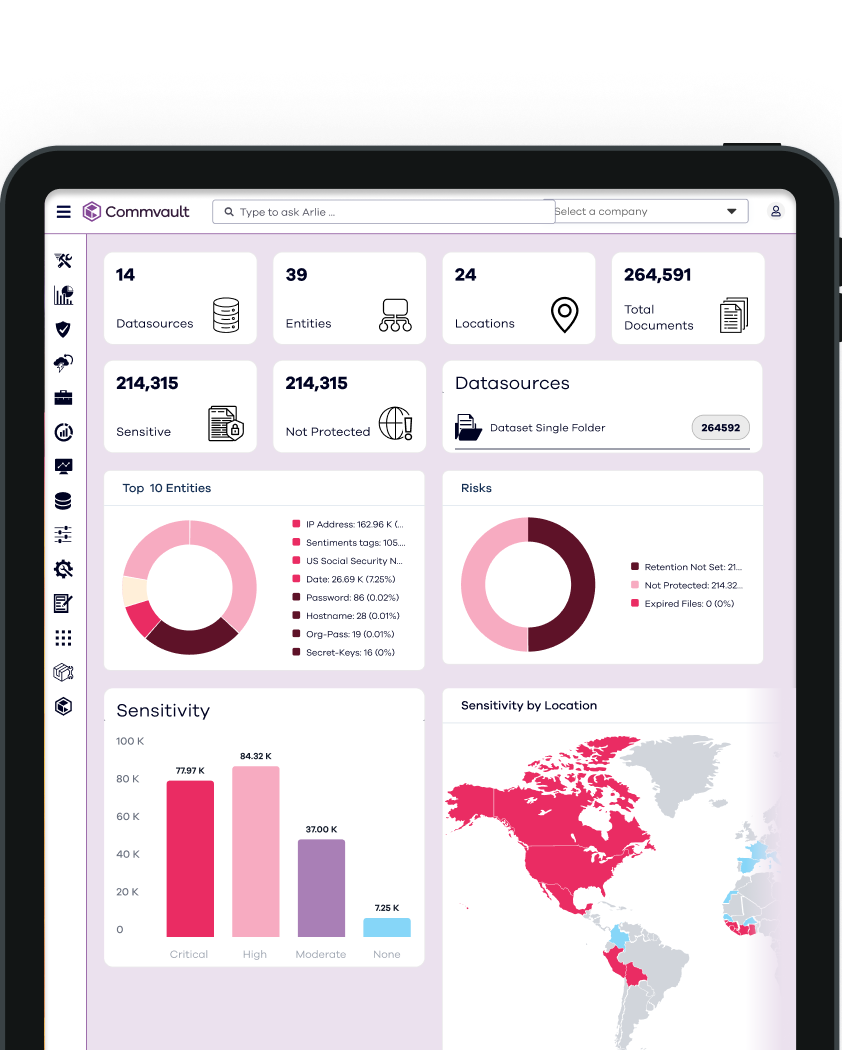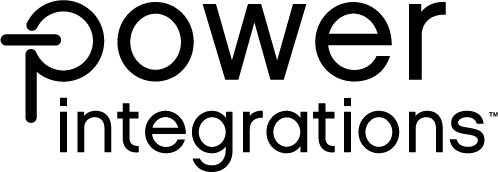Regulatory Compliance Made Easier
Commvault Cloud assists in your journey toward regulatory compliance around data security, privacy, and resilience.

WHY IT MATTERS
Compliance is more than checkboxes
More organizations than ever are subject to regulations, rules, and guidance data privacy, protection, resilience, and cyber readiness.
2%
up to 2% of global revenue potential penalty for compliance violations under NIS2.
2.6x
is the cost of noncompliance vs. the cost of maintaining or meeting compliance standards.
48%
of breaches include customer PII, often covered by regulation.
Source: European Union Law
Source: Ponemon Institute: The True Cost of Compliance
Source: 2024 IBM Cost of Data Breach Report
RESILIENCE & RECOVERY
Substantiate IT and security efforts that bolster resilience
Recent breaches and business outages have spurred new regulations, like DORA, to help guide cyber resilience efforts. Commvault Cloud can assist you on this journey.

Risk management for ICT
Threat and anomaly detection capabilities and visibility into behaviors make it easy to identify security risks. Integrations with security tools automate incident response.
Cyber incident management & response
Speed up the incident response process by automating countermeasures. Get an audit trail to investigate the incident’s cause, impact, and scope for forensics.
Operational resilience testing
Orchestrate full cyber recovery testing with a cleanroom in the cloud or on-premises. Data is restored from an air-gapped, immutable copy that is proactively scanned for malware and threats.
Supply chain and third-party risk
Cloud, hypervisor, and data portability to recover data, systems, and infrastructure to a new provider in the event of a failure or breach.
Information sharing
Threat intelligence is integrated from built-in sources and threat intelligence partners. Insights from Commvault Cloud, including threats, behaviors, and status can be shared via API with other tools.
DATA PRIVACY & PROTECTION
Validate data protection measures
Data protection regulations, like GDPR, help organizations advance their security initiatives and improve their security posture by providing guidance on how to best handle and secure sensitive data.

Discover, classify, and protect sensitive data
Easily understand what kinds of data you have within your environment so you can apply appropriate protection mechanisms. Implement best practices around the security of your data and backups.
Detect anomalies and threats to sensitive data
Deploy decoys and traps near sensitive data sets to divert attention and trigger high-fidelity alerts as attackers perform reconnaissance.
Accountability and audit-ability
Understand your data and how it’s protected, with dashboard views that indicate overall security posture and drill down into controls in place and anomalies in your environment.
Multi-level access control
Apply data protection policies for access depending on sensitivity and classification. Commvault Cloud backup environments feature RBAC, 2FA, MPA, and more to secure your data.
Quickly recover trusted data
Analyze backups and automatically quarantine infected, encrypted, or corrupted files so you can quickly recover trusted data versions.
How it Works
Drive regulatory compliance
Commvault Cloud delivers built-in controls and capabilities to assist with compliance

Reduce risk and defend sensitive data
Automatically discover sensitive and regulated data and apply protection policies that prevent inappropriate access or destructive actions.
Learn about Risk AnalysisSee threats sooner – before data is compromised
Proactive threat, anomaly detection, and cyber deception provide early warning to risks, threats, and attackers before they find, exfiltrate, or damage sensitive critical data.
Learn about Threatwise®Harness cloud-ready resiliency
An on-demand recovery environment for facilitating full cyber recovery testing, forensic analysis and quarantine, and production environment failover in the event of an outage or breach.
Learn about Cleanroom RecoveryKeep backup data clean
Continuously scan backup data and VMs for malware to prevent infection or reinfection upon data restoration. Facilitate clean data recovery following an outage or breach.
Learn about Threat ScanRapidly recover with integrated cloud storage
Secure, air-gapped, immutable, and indelible storage to fulfill 3-2-1 backup, recovery, and resilience requirements. Tamper-proof backups and archiving with multi-layered access controls.
Learn about Air Gap ProtectAnalyst Report
Gartner® Magic Quadrant™
For the 14th time in a row, Commvault has been named a Leader in the Gartner® Magic Quadrant™ for Backup and Data Protection Platforms.

Our Reach
Supporting more than 100,000 companies
Case Study
Federal government agency cuts AWS costs, eases cloud migration
A major federal agency shrinks its AWS footprint by hundreds of terabytes, frees an estimated 25% of IT staff time by delegating FOIA requests, reduces the risk of cyberattacks, and automates backup and recovery for less complexity and lower costs.


Commvault Coud Solution Brief – DORA

Commvault Cloud Solution Brief – GDPR

Commvault & Microsoft to Assist with HIPAA Data
Frequently Asked Questions
Do any regulations mention backup and recovery capabilities as part of compliance requirements?
Several laws and regulations consider backup, recovery, and resilience to be crucial parts of a good cyber program. These include the General Data Protection regulation (GDPR), Health Insurance Portability and Accountability Act (HIPAA), Payment Card Industry Data Security Standards (PCI DSS), Network and Information Systems 2 Directive (NIS2), New York Cyber Security Law (NYCRR 500), California Consumer Privacy Act (CCPA), and Digital Operational Resilience Act (DORA). We recommend consulting with your compliance and legal teams to determine which may apply to your business.
What are some common data protection regulations?
Some well-known regulations include the General Data Protection Regulation (GDPR), the California Consumer Privacy Act (CCPA), and the Health Insurance Portability and Accountability Act (HIPAA).
How can businesses comply with data protection regulations?
Every organization should consult with attorneys and auditors regarding specific regulations. Still, a good place for a program to start would be to conduct regular assessments and audits of data protection practices, implement and monitor security controls, and enlist the help of IT and security practitioners (on staff or through service providers) to validate that security measures are applied and functioning appropriately. A risk-based approach where organizations weigh regulatory requirements and possible risk of loss in the event of a breach or non-compliance with the effort needed to implement controls can also be advised.
Are there regulations or guidance around cyber resilience?
The Digital Operational Resilience Act, or DORA, is an EU regulation aimed at banks and financial entities and has been enacted to help set cybersecurity and cyber resilience standards. We have observed many compliance teams using DORA as guidance, regardless of industry, but consult with your legal and compliance teams for appropriate guidance for your organization.
What can I do to build a good data governance program?
Begin by understanding the types of data and risks within your organization, paying special attention to sensitive and regulated data. You can then set clear, measurable security objectives that can help mitigate and minimize that risk. From there, you can develop and apply data governance policies around the ownership, handling, and lifecycle of data. This can include things like access controls for people or groups, how data is protected, shared, and backed up, and how to dispose of data once it’s no longer relevant or needed.
What is eDiscovery in the context of data management?
E-discovery is identifying, preserving, collecting, processing, reviewing, and producing electronically stored information (ESI) in response to litigation, investigations, or other legal requests. It involves searching for, analyzing, and extracting relevant data from live and backup data sources, and controlling that data to prevent it from being altered or deleted.
Ready to get started?
Experience Commvault cyber resilience
Sign up for a full-access free trial today!








